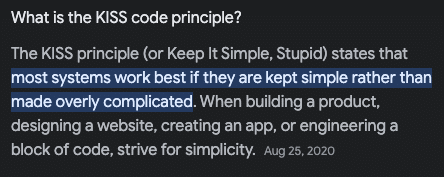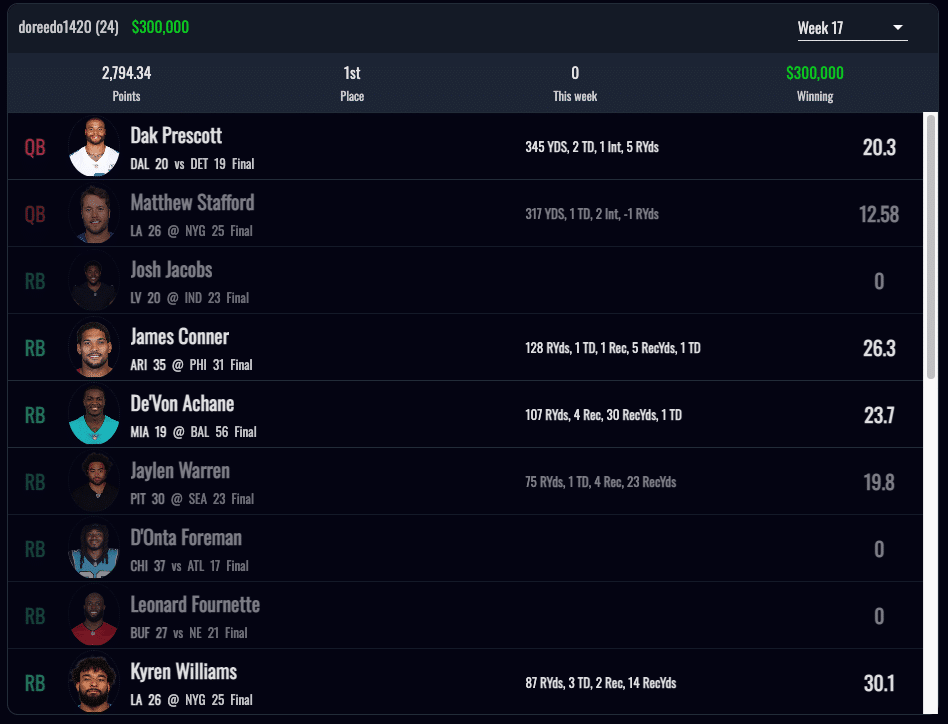If you’ve seen the movie version of Michael Lewis’ book Moneyball, I’m sure you remember this one iconic scene. The Oakland Athletics are trying to replace All-Star level talent and put together a team that can compete in Major League Baseball despite having a minuscule budget.
They have a team of scouts in a conference room with their GM, and the scouts are trying to find players who can replace Jason Giambi, the prior year’s MVP runner-up and one of the best hitters in all of baseball, who left Oakland to play for the Yankees.
But what GM Billy Beane realizes that the scouts don’t is that you simply cannot replace Giambi. More importantly, you can’t replace a player like Giambi at a reasonable cost by looking for a player like Giambi. If a player has all the characteristics of the best players in the game, they are going to cost a lot. Everyone can see and understand those players. But if you are trying to find the next Jason Giambi, you’re not going to find him looking for the players who look like him… or look like what you think the next Giambi *should* look like.
This scene basically epitomizes ‘Moneyball’, and it also hammers home what creates the advantages using this Moneyball line of thinking. Listen to all the scouts throughout that scene.
“He certainly has had his problems off the field.”
“He’s a little thick around the waist.”
“Old man Justice.”
“His legs are gone and I question whether the bat speed is still there.”
And on and on with the typical scouting concerns.
But Billy reiterates over and over the only thing that matters.
He gets on base.
The Moneyball Approach to Prospect Scouting in Fantasy Football
…He Gets On Base
This is going to be my new favorite phrase in fantasy football (right next to ‘waterfall‘), but that’s only because of how incredibly true (and impactful) it is.
Once upon a time, I was in the corporate analytics world and learned about K.I.S.S. – otherwise known as the principle of ‘Keep It Simple, Stupid’.

That one has always stuck with me, but I have found it particularly useful in fantasy football and best ball. With all the data and information that is out there nowadays, it is so easy to fall into the trap of ‘paralysis by analysis’ in this game. It actually started for me when I moved from the corporate world over to DFS (daily fantasy sports). I was grinding film and getting super in the weeds with data and taking in as much information as I could thinking it would make me better. But it wasn’t until I cut out nearly all of it that I became successful. And I’ve been lucky enough to have a long, reasonably successful DFS career that actually led to me diving into this Best Ball space, to which I owe basically all of it to keeping it simple.
I took a step back and focused on essentially two things and two things only – what are the contests that I can gain the most leverage on my opponents in, and how do I spot the ‘best’ leverage for that specific contest on a given slate. Grinding film and PFF grades and correlation matrices and offensive line grades didn’t matter. I had strong projections that I outsourced, so I just needed to figure out where the exploitable leverage points lied each week or night. It wasn’t easy… but it was simple.
That’s really all that ‘he gets on base’ stands for through this fantasy lense. There is SO much information out there. The amount of new data and metrics at our fingertips grows by the day. There are always new twitter and YouTube scouts out there.
But we’ve also, over the years, accumulated more and more variables that we factor in both positively and negatively about players in fantasy football. In and of itself, that’s not wrong or even bad. It’s just like the scouts. The concerns they brought up were totally valid. You don’t want players with off-field issues. You don’t want out of shape players. You don’t want guys who have lost their talent due to aging.
Problem is, the more factors we try to balance, the more we muddy up the waters for ourselves. The less simple the process is, the more difficult it is for us to draw conclusions from that process. And it becomes easier to miss good/impactful players because we have put all these rules in place or boxes they need to check to suit our needs.
When all that *really* matters is… do they get on base?
What is Getting On Base?
Naturally, at this point you’re probably thinking, “Ok buddy, this ‘gets on base’ analogy sounds great, but what does it actually mean?”
This is when it really gets fun… but also probably a bit controversial.
The fantasy football market has developed over years and years doing the exact opposite of K.I.S.S. We’ve got data coming out the wazoo. We’ve got preconceived notions from historical data studies about boxes players need to check to be considered good. We’ve got “second year breakouts”, “post hype sleepers”, “early college breakouts”, and countless other concepts that have become engrained in our brains as important.
Which is not to say they’re not relevant, helpful or don’t matter. Let’s make sure we make that clear. Just like the concerns from the scouts about Jeremy Giambi or David Justice, these things are reasonable and can absolutely matter in determining the outcome of player success.
But many of these high level rules or studies, as well as these intangible concepts are very tough to determine how (and how much) they specifically apply to any individual player. So a player is rumored to like to party a bit, how do we know whether it will impact his performance? We don’t. Or a more applicable example, we know that over a historical sample, players who ‘break out’ at a later age in college can maybe have a lower hit rate than those who break out early.
The problem in both of these cases is that we don’t really have any idea how much it impacts this specific player, yet we are knocking them in a manner that assumes we know quite certainly. Michael Jordan was well known for gambling, golfing, smoking cigars and drinking even on game days while playing with the Bulls. And he was arguably the greatest basketball player ever. Tank Dell started at Alabama A&M, transferred to Independence Community College (of Last Chance U fame), and was in his 4th year of college before he emerged at Houston who was in the American Athletic conference at the time. He even turned 24 near the beginning of his rookie season. He’s also 5’10, 165 pounds and operated almost entirely out of the slot.
But they got on base.
And by getting on base, it’s really just this. They produced. They demonstrated their talent on the field through production. And not by scoring touchdowns, but by earning volume and producing efficiently on that volume. Puka Nacua was entirely ignored because he was slow and didn’t put up big stats at BYU. He dealt with some injuries, but he earned volume at an extremely high level and was efficient. Over his final two seasons at BYU, he earned a target on 32% of his routes. His yards per route run was ELITE (3.53 and 3.44 his final two years). But he had all these other red flags that we’ve built into our process.
As I said, it’s not that all the other stuff doesn’t matter or isn’t a valid concern or viewpoint. It’s just that we can be just as accurate, maybe even more so, focusing on whether or not they get on base. Whether or not they produced and earned work at a high level. And then you find players who get on base, but the market is not that high on because of all the other reasons, just like the scouts mentioned.
“He’s pretty small.”
“He only ran a 4.6 40.”
“He broke out late in college.”
“He only drew targets because of a lack of competition.”
“He wasn’t a high draft capital player.”
“His team isn’t paying him a big contract.”
As valid as all those concerns are, we just can’t worry about them all. We are mostly fooling ourselves with more data points thinking if we add more data, we’ll be more accurate. But often the opposite happens. We are always going to be imperfect in player selection. That’s just how it works when analyzing humans and sports. But if we focus on the single most important element, as they do in Moneyball, we can be right more often.
And when we are right, it’s going to have even more impact. Because we are spotting the players who are really good at the game that the market is holding back for issues that end up not mattering.
Rookies & Player Takes
Clearly, where this Moneyball or ‘he gets on base’ concept comes into play the most is with player takes and rookie prospect analysis. After all, how we decide who to draft is the game we are playing.
But I think it’s extremely important to point out because this is specifically where I believe the greatest growth in my game has occurred since getting so heavily into Best Ball a few years ago. I fell back into some of the traps I had encountered during my unsuccessful days of DFS. Grinding tape and consuming large amounts of data and content to try to gain an edge on players.
And funny enough, I turned into those scouts in the video above. When you try to account for a large amount of factors in your evaluation process, you generally end up not appropriately accounting for any. Even more harmful, you make the Giambi mistake. Here’s what Jason Giambi was, so let’s look at his characteristics and try to find the next Giambi.
But there is no next Giambi. There is no next Lebron James. Or Tiger Woods. Or Lewis Hamilton (shoutout to my F1 fans).
The next star isn’t going to look like those guys. He’s going to look different. And if he does even look similar to those players, we’ll all know it. Everyone knows Marvin Harrison Jr. is great. Everyone knew Bijan Robinson and Jahmyr Gibbs were great. But because Puka Nacua, Tank Dell and Kyren Williams didn’t check all those same boxes, people wrote them off.
Yet if we removed all the other parts of the process – All the size, speed, draft capital, breakout age, competition level, etc. parts of our process – and all we asked ourselves about them was “can they get on base?”
The answer would have absolutely been YES.
Focus on the Island of Misfit Toys
Which leads me to my final point of Moneyball through a fantasy football lense. Not only can we simplify our process and be just as accurate (if not more) with our ‘get on base’ focus, but by specifically focusing in on the players who ‘get on base’ but also have these other warts that our competitors are worried about, we can hit the biggest home runs every year in fantasy.
The fantasy market tends to make excuses for players who check certain boxes, typically things like size, speed, draft capital, etc. On the flip side, the market tends to do the opposite to players who don’t check those boxes – small, slow, not a first or second round NFL draft pick, etc.
Take Kadarius Toney for example. He never really did anything in college except make some cool highlights with his jukes. He didn’t produce, and he didn’t earn volume at a high level. He looks like a terrible prospect. But then he gets drafted in the first round, and we (my idiot self included) are making excuses for him for THREE YEARS in our best ball drafts.
Meanwhile, his own teammate, Rashee Rice, is a 2nd round pick in a wide open WR room. Surrounded by players who have done literally nothing in the NFL and an aging Travis Kelce, but attached to hall of famer Patrick Mahomes at QB. But Rice isn’t a perfect prospect. He didn’t really do anything of note at SMU for 3 years. And it was SMU, which is not exactly Bama. Even the really smart film grinders who I trust didn’t love him either. Here’s his NFL.com scouting overview (woof):

So because Rashee has a lot of these red flags, we actually draft him after Toney and after Skyy Moore. And after many other WRs, including other rookies. But you know what Rice did in his final year at SMU? I bet you can guess. You’re damn right, he got on base.
He posted a 96/1,344/10 line on an insane 156 targets. He had a yards per route run over 3 (3.05) and a targets per route run of 0.35, which is very elite. But because his film was imperfect and because he didn’t breakout until his senior year, we avoided the player who is not an alpha WR for Patrick Mahomes being drafted in the 2nd round of fantasy drafts.
These guys – what I like to call the island of misfit toys – are where best ball tournaments and fantasy leagues are won. Not only because good players emerge from this group every year, but because our opponents continue to make them cheap for us… every year.
And especially now, it’s important to note that we are drafting and living in a very different world of fantasy football. Rookies are playing early and often nowadays in the NFL. With NIL, players are staying in college a bit longer. Heck, these current players coming out had a free year of college eligibility from COVID. And the game of football is just different, too. Obviously it’s a passing league, but we are seeing more and more players who don’t fit the size/speed parameters we used to worry so much about become really impactful NFL players. Some of these island of misfit toys players may not have succeeded 10 years ago, like Tank Dell. With NFL offenses spreading defenses out and more utilization of slot receivers combined with NFL defenses preventing big plays, these guys can succeed much more easily.
And when they succeed… that’s when we win… and win BIG.
The final concept they mention in the Moneyball clip is about how they can’t replace Giambi one for one, but they can try to replace him ‘in the aggregate’. That’s such an underrated feature of this mindset for fantasy football and best ball, too.
Giambi was the MVP runner up and one of the best hitters in baseball. For our purposes, this would be like a top 5 pick in our best ball drafts. We shouldn’t be trying to find the next CMC with every single one of our running back picks because… there is no next CMC. And if there was, they would be so easy to spot that the market would also make them super expensive (like Bijan in 2023).
We might be able to replace him in the aggregate, however. By scouring the island of misfit toys at running back, we can end up with a collection of players who all do their individual piece of re-creating the impact of CMC. I am not going to find a player who just replaces CMC’s fantasy scoring straight up over the course of the entire season. But I may be able to find players who ‘get on base’ for cheaper, and those players come together to give me a similar impact as a group. Think about a team with Kyren Williams, Devon Achane, and James Conner on it in 2023, Clearly, none of those players have the same collection of talent and fantasy ability as Christian McCaffrey. They all have/had some pretty serious warts and concerns, whether it be speed, size, age, etc.
But we knew this… they all get on base (and in unique ways).
None of those players are going to match CMC’s total score for the season by themselves, but if you had all 3 of them on the same team, as Spike Week member ‘doreedo1420’ did on his $300,000 winning team in the Drafters NFL Best Ball Championship, you re-created this superstar fantasy RB in the aggregate.





